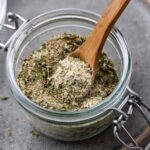Arbutus Biopharma Corporation has announced breakthrough data from its IM-PROVE I Phase 2a clinical trial, demonstrating that a combination of imdusiran (AB-729), an RNA interference (RNAi) therapeutic, and a short course of pegylated interferon alfa-2α (IFN) can achieve a functional cure in patients with chronic hepatitis B virus (cHBV) infection. The data, showing up to 50% of patients achieving a functional cure, will be presented at The Liver Meeting® 2024, hosted by the American Association for the Study of Liver Diseases (AASLD) on November 18.
In our interview with Michael J McElhaugh, interim president and CEO and director of Arbutus Biopharma, he discussed the promising results from the IM-PROVE I trial. “The data from this study reveal significant long-term potential for imdusiran in combination with interferon as a pathway toward a functional cure for cHBV,” McElhaugh said. “This combination has the potential to change the treatment landscape for Hepatitis B.”
The IM-PROVE I trial included HBeAg-negative patients with suppressed HBV who received six doses of imdusiran alongside 24 weeks of interferon, in addition to ongoing nucleos(t)ide analogue (NA) therapy. Results revealed that 50% (3/6) of patients with baseline hepatitis B surface antigen (HBsAg) levels less than 1000 IU/mL achieved a functional cure, defined as sustained HBsAg loss and undetectable HBV DNA for 24 weeks after stopping all treatments. Overall, 25% (3/12) of patients across the cohort achieved a functional cure.
According to McElhaugh, the IM-PROVE I study focused on evaluating the combination of imdusiran and interferon in e-antigen-negative patients who had previously been chronically suppressed with nucleoside analogs, the current standard of care. The trial tested four different treatment regimens to evaluate how well imdusiran could reduce surface antigen levels, a key marker of the virus, in combination with interferon over periods ranging from 12 to 24 weeks.
“The primary goal of this trial was to reduce surface antigen levels with imdusiran,” McElhaugh explained. “After the interferon phase, we paused all treatments and monitored patients for 24 weeks without therapy, which is the regulatory definition of a functional cure. This means Hepatitis B DNA is undetectable, and surface antigen is lost or reduced to below the limit of quantification.”
The results from the study were groundbreaking, particularly in the group that received imdusiran continuously in combination with 24 weeks of interferon. In this cohort, 25% of patients achieved a functional cure, a result McElhaugh calls “one of the best seen in the field.” Even more notable was the response rate in patients with baseline surface antigen levels below 1,000 IU/mL, where 50% of patients achieved a functional cure.
“This patient population is key,” McElhaugh emphasized. “Hepatitis B is a major global health issue, but even focusing on a subset—such as those with lower baseline surface antigen levels—can make a big difference. Achieving a functional cure in half of these patients is a very promising result.”
When asked about factors that influenced which patients were more likely to achieve a functional cure, McElhaugh highlighted baseline surface antigen levels as the most significant predictor. Patients with surface antigen levels below 1000 IU/mL had a markedly higher chance of success compared to those with higher levels.
“We saw that patients with lower surface antigen levels were more likely to achieve a functional cure,” McElhaugh noted. “That’s a critical insight for optimizing treatment regimens moving forward.”
Comparing imdusiran to other RNAi therapies in development for Hepatitis B, McElhaugh shared that Arbutus’ product stands out due to its ability to induce immune activation. Unlike other siRNA treatments, which have largely been considered similar in their mechanisms, imdusiran has demonstrated the capacity to prime the immune system and activate T-cells during the initial treatment phase.
“This immune activation makes imdusiran different from other siRNAs,” McElhaugh explained. “It creates a better environment for immune-modulatory treatments like interferon to work more effectively. These differences, such as the structure and delivery mechanisms of the siRNA, contribute to the better outcomes we’re seeing.”
Looking ahead, McElhaugh revealed that Arbutus is eager to move imdusiran into later-stage development as quickly as possible. The company is currently in discussions about the best path forward, including engagement with regulatory agencies to ensure the swift progression of the therapy. “Our goal is to maximize the functional cure rates we’ve seen with imdusiran and bring it to patients as soon as we can,” McElhaugh said.
Although the AASLD conference had just kicked off, McElhaugh expressed optimism about the reception of the data so far. “We’ve had a packed schedule of meetings, and everyone we’ve spoken to has been very impressed with the results,” he shared. “It’s been a rough day in the markets, but we’re feeling confident about where we stand with imdusiran.”









Want all the contact details of businesses in your city? I’ll get it done quickly and efficiently. https://telegra.ph/Personalized-Contact-Data-Extraction-from-Google-Maps-10-03 (or telegram: @chamerion)
8pbm7i